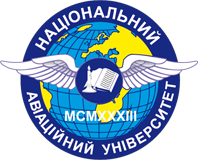THE TOPIC OF TIBET IN OIL FIGURATIVE ART OF CHINA AT THE END OF THE 20TH CENTURY AND THE BEGINNING OF THE 21ST CENTURY
DOI:
https://doi.org/10.32782/uad.2023.6.13Keywords:
culture, the fine art of the mid-20th – the beginning of the 21st century, painting, society, realism, genre, the topic of Tibet, artistic imagesAbstract
After the accession of Tibet to China as an autonomous region in 1950s, the topic of Tibet can be traced in easel painting of the country. Chinese artists began prioritizing socio-political changes in the region, depicting transformations connected with collectivization and the development of ‘The New China.’ In the 1950s–1970s, the topic of Tibet was closely intertwined with socio-political problems, with the government’s objectives and coverage of improving the lives of ethnic minorities in the region. In the 1980s, with the advancement of the new period of economic and social reforms, the appearance of the direction called ‘the art of scars’, the way of rethinking of the accomplishments of artists of the previous generations, the topic of Tibet gets new interpretation. During this period, artists concentrated on depicting characters’ inner world, and their picturesque artworks became saturated with lyrical hints of romanticism and sentimentalism. The topic of Tibet in figurative art of China receives its development in the next period (1980–2000) as well, which is characterized by a deeper analysis of socio-ethnic issues. During this time, artists’ approach to creating the image of Tibetans changed; psychologism and realism of images, which are based on deep study of Tibetans’ everyday life and religious festivals, acquired their importance. In the modern stage of development of Chinese easel painting (2000-2020), the topic of Tibet stays relevant. Artists use various approaches to its depiction, staying within the scope of realistic art. Even though the topic remains an essential part of easel painting, modern artists allow themselves more freedom and creative experiments. The paper provides an analysis of the works of leading artists who devoted their creativity to Tibetan problematics: Pan ShiXun, Chen Danqing, Ma Changli, Zhou Chunya, Zhu Yiyong, Yu Xiaodong, Zhang Yibo, and Han Yuchen. The artists create images of Tibet, using original ductile decisions to express the uniqueness of the region and its residents. From socialist realism to photorealism, they depict diverse decisions on the topic but still stay within the realistic style. Exhibitions and biennales devoted to works on the Tibetan topic reveal an abundance of approaches and depict the significance of this topic in the modern easel painting of China.
References
Ковальова М.М., Цю Чжуанюй. Тема Тибету в творчості китайського художника Хань Юйченя. Матеріали Всеукраїнської наукової конференції професорсько-викладацького складу і студентів ХДАДМ за підсумками роботи 2019/2020 навчального року. Харків: ХДАДМ, 2020. С. 54–56.
Хань Юйчень. Збірник олійного живопису на тему Тибету. Шанхай: Редакція китайського журналу «Веньхуа Женьу», 2020. 188 с.
Lin Lu. Shixiong: 15 Expeditions to Tibet. URL: https://www.cafa.com.cn/en/news/details/8326865 (дата звернення 7.11.2022)
高波. 从西藏主题绘画说写生与油画民族化. 文艺研究. № 8. 142–143. [Гао Бо. Розмова про ескізи та націоналізацію олійного живопису у тибетських тематичних картинах. Літературно-мистецькі дослідження. № 8. С. 142–143].
李继开. 浅议周春芽的艺术创作. 湖北美术学院学报. 2016. № 2. 頁. 116–118. [Лі Цзікай. Аналіз художньої творчості Чжоу Чунья. Журнал Хубейського інституту образотворчих мистецтв Hubei Institute of Fine Arts Journal. 2016. № 2. С. 116–118].
李昌菊. 雪域高原的民族写照–油画本土化历程中的西藏题材. 美术. № 6. 2008. 頁.91–99. [Лі Чанджу. Етнічне зображення снігового плато – тибетська тематика в процесі локалізації олійного живопису. Образотворче мистецтво. № 6. 2008. C. 91–99].
路洪明. 天津美术学院教授于小冬:委拉斯开兹对我影响最大. 天津美术网. 14.02.2018. URL: http://www.022meishu.com/Oil_painting/2018/02-14/44826_0.html. (дата звернення 7.11.2022) [Лу Хунмін. Професор Юй Сяодун з Тяньцзінської академії образотворчих мистецтв: Веласкес справив на мене найбільший вплив // Tianjin Art Network. 14.02. 2018]
刘芯涛. 周春芽艺术的内在生命力探析. 艺术当代. 2018. № 17. 頁. 110–112. [Лю Сіньтао. Аналіз внутрішньої життєвості мистецтва Чжоу Чунья. Сучасне мистецтво. 2018. № 17. С. 110–112.].
劉淳. 中國油畫史 增訂本. 北京: 版社, 2016. 544页. [Лю Чунь. Історія китайського олійного живопису (оновлене видання), Пекінське видавництво, 2016. 544 c.]
孙大棠. 西藏题材作为实验田–油画民族化和改造中国画的实践在西藏题材绘画中的表现. 当代艺术与投资. 2007. № 10. 頁. 12–17. [Сунь Датанг. Тибетська тематика як експериментальне поле – націоналізація олійного живопису та практика трансформації китайського живопису. Сучасне мистецтво та інвестиції. 2007. № 10. С. 12–17].
崔桦. 浅论陈丹青油画的现实主义之美 – 以 «西藏组画» 为例. 陕西开放大学学报. 2022. № 2. 頁. 55–59. [Цуй Хуа. Коротке обговорення реалістичної краси олійних картин Чень Даньціна – на прикладі «Тибетської серії». Журнал Відкритого університету Шеньсі. 2022. № 2. С. 55–59].








